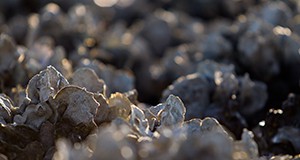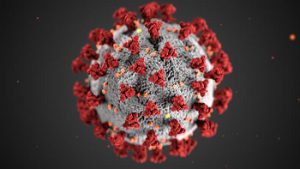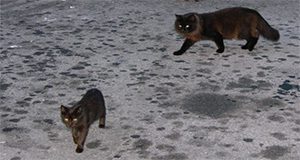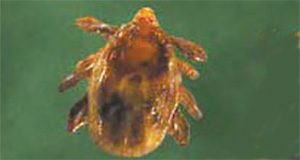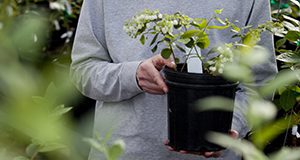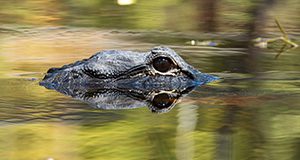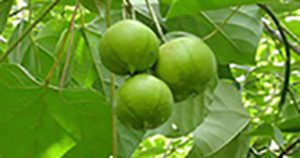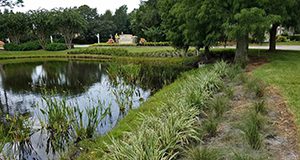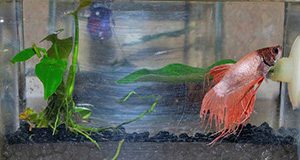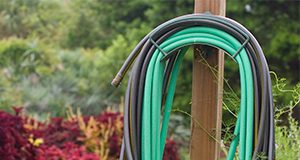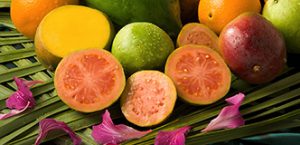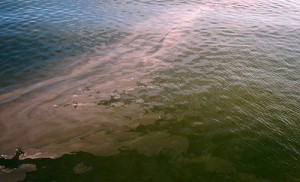Florida’s Apalachicola Bay has long been known for its oyster harvesting and processing industry, but a steady decline in oyster landings in the Bay has threatened the industry. The complex nature of the human and natural systems that together affect Apalachicola’s oyster reefs has created uncertainty about the long-term sustainability of the oyster fishing industry in Franklin County, which has prompted many questions about the ecology of the Bay and the economy of the region from a variety of stakeholders that directly or indirectly depend on the survival and successful restoration of the Apalachicola Bay oyster fishery. This 5-page fact sheet estimates the potential economic impacts associated with a successfully restored oyster reef in Apalachicola Bay, basing estimates on different hypothetical oyster harvest goals. Written by Robert Botta, Ed Camp, Christa Court, Caleb Stair, and Charles Adams and published by the UF/IFAS Food and Resource Economics Department, it is designed to inform decision making and discussions related to restoration and resource management in the region.
https://edis.ifas.ufl.edu/fe1085
Category: Uncategorized
Preguntas frecuentes del COVID-19 para los bancos de alimentos consejos a poner en practica
¿Cuáles son los pasos que deben implementar?
¿Qué debe comunicarse a los clientes?
¿Cuál es el protocolo en el caso de que un empleado o cliente se diagnostice con COVID-19 o piense que lo tiene?
This is the Spanish-language version of FSHN20-6/FS329: COVID-19 FAQ for Food Banks: Best Practices and Communication. Written by Natalie Seymour, Mary Yavelak, Candice Christian, and Ben Chapman (NC State University Extension), translated by Jenny Aviles Rodriguez, and published by the UF/IFAS Food Science and Human Nutrition Department.
https://edis.ifas.ufl.edu/fs352
How Effective and Humane Is Trap-Neuter-Release (TNR) for Feral Cats?
As the number of feral cats continues to increase, land managers, public health officials, and private citizens are voicing concerns about how to address the nuisance and public health impacts, as well as animal welfare concerns, that feral cats create. Trap-neuter-release programs aimed at reducing feral cat populations without euthanasia are gaining popularity in the United States. But do they work? Authors Mark Hostetler, Samantha M. Wisely, Steve Johnson, Elizabeth F. Pienaar, and Martin Main discuss the pros and cons of trap-neuter-release programs in this 8-page fact sheet published by the UF/IFAS Department of Wildlife Ecology and Conservation.
https://edis.ifas.ufl.edu/uw468
Brown Dog Tick, Rhipicephalus sanguineus Latreille (Arachnida: Acari: Ixodidae)
The brown dog tick is unusual among ticks in that it can complete its entire life cycle indoors as well as outdoors. Brown dog tick infestations can develop in dog kennels and residences, where populations can reach dramatic levels and cause dog diseases. This 6-page fact sheet written by and published by the UF/IFAS provides the distribution, description and identification, life cycle, and management of the brown dog tick as well as its hosts and the medical and veterinary significance of this troublesome pest.
https://edis.ifas.ufl.edu/in378
COVID-19 FAQ for Community Gardens: Steps for Garden Managers and Gardeners
These flyers, written by Natalie Seymour, Mary Yavelak, Candice Christian, and Ben Chapman (NC State University Extension), provide quick, digestible information regarding prevention of COVID-19 and procedures for food service, grocery stores, and other food-related businesses. This flyer in particular provides guidance for managing community gardens with regards to COVID-19. Published by the UF/IFAS Food Science and Human Nutrition Department.
https://edis.ifas.ufl.edu/fs342
Effectiveness of Retail Promotions in the Green Industry by Age Group: A Case Study
Do people of different ages shop differently for their garden plants? This 6-page fact sheet published by the UF/IFAS Food and Resource Economics Department shares results from a study investigating differences between younger and older consumers and their visual attention to in-store signage and plant tag information. Authors Hayk Khachatryan and Alicia Rihn provide a deeper understanding of how end consumers use point-of-sale information to determine their purchases in the retail center. Green industry growers, marketing intermediaries, and retailers will find the information useful as they design in-store marketing materials.
https://edis.ifas.ufl.edu/fe1073
Have you seen a skinny alligator in South Florida?
The American alligator (Alligator mississippiensis) is an effective indicator for restoration of more natural patterns of water levels and flows through the Everglades. The Florida Everglades is a highly modified system, so monitoring health of alligators can inform how different areas of this large ecosystem are doing. Based on an increase in reports of very skinny alligators, biologists and natural resource managers are seeking help from the public to better understand where and when this problem occurs. This fact sheet serves as a guide for citizen scientists on how to score alligator body condition and report sightings of very skinny or unhealthy alligators.
http://edis.ifas.ufl.edu/uw460
Tung Oil Production in Florida
Tung tree seed produce an oil that is valuable in wood finishing and for various other uses. Development of a later-flowering tung tree cultivar has sparked renewed interest in tung seed as a potential alternative crop for northern and central Florida on sites having relatively well-drained, fertile soils and adequate moisture. This 3-page fact sheet written by Pat Minogue and published by the UF/IFAS School of Forest Resources and Conservation presents a history of tung oil production in Florida and provides the ecology and cultivation of the fast-growing trees. It outlines a plan for additional research to determine whether tung oil could again be produced in Florida.
http://edis.ifas.ufl.edu/fr420
A New Database on Trait-Based Selection of Stormwater Pond Plants
Stormwater ponds play critical roles for flood control and water quality treatment, and they can provide ecological services to communities. Those ecological services can be enhanced with proper pond design and maintenance. This 6-page fact sheet written by Gisele P. Nighswander, Mary E. Szoka, Kayla M. Hess, Eban Z. Bean, Gail Hansen de Chapman, and Basil V. Iannone III and published by the UF/IFAS School of Forest Resources and Conservation provides a comprehensive database of plant traits to help readers make informed stormwater pond plant selection decisions based on their own relative priorities.
http://edis.ifas.ufl.edu/fr416
Evolution, culture, and care for Betta splendens
The commercial betta, or Siamese fighting fish (Betta splendens), is one of a group of fishes that live in fresh water in Africa and southern Asia. Today’s commercial bettas are selected for bright colors as well as elaborate fins because the ornamental hobby is the main market for this species. This 5-page fact sheet written by Craig Watson, Matthew DiMaggio, Jeffrey Hill, Quenton Tuckett, and Roy Yanong and published by School of Forest Resources and Conservation, Program in Fisheries and Aquatic Sciences explains how to grow and care for these beautiful and fascinating fishes.
http://edis.ifas.ufl.edu/fa212
Manual de los Reglamentos del Agua en Florida: Distritos de Conservación de Suelos y Aguas
Los capítulos anteriores de este Manual de los Reglamentos del Agua en Florida discuten las agencias estatales involucradas en la gestión de los recursos hídricos, como el Departamento de Protección Ambiental de Florida (FE593), los Distritos de Administración de Agua de Florida (FE594), la Comisión de Conservación de Pesca y Vida Silvestre de Florida (FE595), el Departamento de Florida de Agricultura y Servicios al Consumidor (FE596) y el Departamento de Salud de la Florida (FE597). Para cuestiones de recursos hídricos en áreas agrícolas, la discusión de las agencias que trabajan en el manejo de los recursos hídricos sería incompleta sin los Distritos de Conservación de Suelos y Agua de la Florida. Written by Tatiana Borisova, Michael T. Olexa, y Jarrett Davis and published by the UF/IFAS Food and Resource Economics Department.
http://edis.ifas.ufl.edu/fe1048
Strategies for Engaging and Communicating with Elected Officials
This 5-page document is one in the series Communicating with Elected Officials. It details a strategy for those seeking to engage with elected officials. Written by Ricky W. Telg and Shelli D. Rampold and published by the UF/IFAS Department of Agricultural Education and Communication, December 2018.
http://edis.ifas.ufl.edu/wc324
Cost Estimates of Producing Pink Guava (Psidium guajava L.) in South Florida
This 6-page fact sheet written by Edward Evans, Fredy H. Ballen, Jonathan Crane, and Aditya Singh and published by the UF/IFAS Food and Resource Economics Department presents the estimated costs and returns associated with the operation of an established pink guava grove in south Florida. The information presented was collected through field interviews with growers and industry specialists; it reflects a wide diversity of production techniques in small guava orchards. The information presented is intended only as a reference to estimate the financial requirements of operating an established pink guava grove.
http://edis.ifas.ufl.edu/fe1036
We Need Your Advice!
Florida Extension is a partnership between the University of Florida and Florida A & M University to improve the quality of life for people like you through education. In the coming decade, decisions will be made by Florida Extension that influence you and your community. We invite you to participate in our Community Input Survey as a way to give your opinions about certain issues that may impact these decisions. The focus of this survey is your own community — where you live, shop, work and play.
The survey runs September 1 through December 31, 2016. The results of the survey will be available in spring 2017.
Please share this survey link with your family, friends, and coworkers. We look forward to hearing from all of you.
Take the survey: https://ufl.qualtrics.com/jfe/form/SV_4MAOfUFiafbNYrz
NOTICE: EDIS may be affected by computer outage this Saturday, August 13th
The EDIS website (http://edis.ifas.ufl.edu) may be down on Saturday starting at 8:00 a.m. due to maintenance on the power supply to the main server on UF's main campus. Although EDIS servers are among those impacted by the planned outage this Saturday, we are accelerating our migration schedule in the hopes that we can move off of the affected servers before the end of the week.
If the migration proves too complex to manage on short notice, the website will be down. Print ordering and publication approval (Workflow) sites, as well as the authoring tool, may be down as well.
New Featured Creatures for January
Tobacco Thrips Frankliniella fusca (Hinds) (Insecta: Thysanoptera: Thripidae)
http://edis.ifas.ufl.edu/in1104
Climate Change and the Occurrence of Harmful Microorganisms in Florida’s Ocean and Coastal Waters
Climate change is expected to result in increased temperatures of nearshore ocean water, and this could lead to increased growth of harmful microorganisms. These include algae that form noxious or toxic blooms, including red tides, and bacteria and other pathogens. This situation could have negative consequences in regard to human health and also Florida’s ocean-related economy. A 6-page fact sheet written by Karl Havens, and published by the UF Department of Sea Grant, June 2015.
http://edis.ifas.ufl.edu/sg136
Encouraging Landscape Water-Conservation Behaviors #1: Tailoring Programs To Florida Residents Who Use Irrigation in the Home Landscape
To better promote water-conservation practices among homeowners who irrigate their landscaping, Extension professionals must first have a clear understanding of this target audience’s habits, beliefs, and needs. This 10-page fact sheet recommends that Extension professionals analyze their audiences through several factors, including their interest in water conservation and knowledge of water issues and laws. Written by Laura A. Warner, Emmett Martin, Alexa Lamm, Joy Rumble, and Randall Cantrell, and published by the UF Department of Agricultural Education and Communication, May 2015. http://edis.ifas.ufl.edu/wc199
Congratulations to CALS Award Recipients
Congratulations to the following EDIS authors who were recognized with awards at this year’s UF/IFAS College of Agriculture and Life Sciences Scholarship and Leadership Awards Banquet:
- Rebecca Baldwin, Entomology and Nematology – Undergraduate Adviser of the Year
- Andrea Lucky, Entomology and Nematology – Undergraduate Teacher of the Year
- Martha Monroe, Forest Resources and Conservation – Graduate Teacher/Adviser of the Year
- Amanda Ford, Nutritional Sciences – Jimmy G. Cheek Graduate Student Medal of Excellence
Attention Authors: 2013 Statistics are ready!
 The season is upon us for year end reporting! The number of visits for each EDIS publication (i.e., November 16, 2012 – November 15, 2013) are now available. Use our handy search form to see how popular publications have been over the last five years by author, department, or title keyword.
The season is upon us for year end reporting! The number of visits for each EDIS publication (i.e., November 16, 2012 – November 15, 2013) are now available. Use our handy search form to see how popular publications have been over the last five years by author, department, or title keyword.
http://edis.ifas.ufl.edu/stats.html
